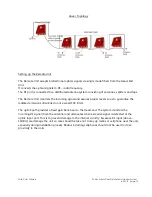
Safe-Com Wireless Public Safety Fiber Distributed Antenna System
6-20-18 page 4
Introduction
Safe-Coms DASAssure™ is a patent-pending fiber Distributed Antenna Systems utilizing a new
architecture that addresses the challenges of designing, deploying and maintaining a Public Safety
DAS over its life-time. This innovative approach utilizes channel processing that assures the lowest
interference and spurious radio communications coverage enhancement available. This modular
hot-swap card system permits single channel expansion on ANY frequency adding only the power
and resources required. Yet the design is the most compact fiber DAS available – easily fitting 4
bands into a 18x18x6inch NEMA 4 unit. Safe-Com's high quality manufacturing system and
superior applications support assures your success and the public's safety.
This User Manual is specifically written for the SAFE-1000 Series:
SAFE-1020 Off-Air Head-End. Class A
SAFE-1015 Fiber Remote Unit, Class A
And the
SAFE-1030 Bidirectional Amplifier, Class A
FCC Antenna Requirements
The user must assure that the installation meets FCC RF exposure limits. Minimum distance
between any person and the operating antenna must be 24 inches or 60 cm. The antenna must be
mounted on a stable, permanent structure.
Maximum ERP is 5 watts per FCC regulations per rule part 90.219(e)(1). The FCC licensed and
qualified installer user must calculate the total transmitted power, taking into account the losses of
the cables and splitters etc, plus the gain of the antenna to assure compliance with the maximum
exposure regulation.
Lightening protection is required on all antennas as loss or damage as a result of lightening is not
covered by the warranty. Antennas must be connected prior to turning up power to the unit.





































